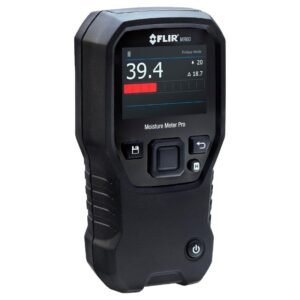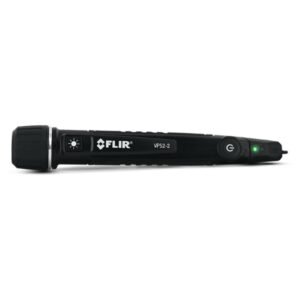Help Center
Help Center
₹12,000.00 Original price was: ₹12,000.00.₹9,999.00Current price is: ₹9,999.00. inc. Gst
Product Overview
| Compliance Standard | JGJ/T23-2001 |
| Compressive Strength Range | 10–60 MPa |
| Standard Energy | 2.207 J |
| Reading System | Pointer direct reading |
| Approved By | Ministry of Construction, Engineering Use |
| Pointer Length | 20.0 ± 0.2 mm |
| Pointer Friction | 0.65 ± 0.15 N |
| Flip Rod End Semi-Diameter | 25 ± 1.0 mm |
| Flip Spring Rigidity | 785.0 ± 40.0 N/m |
| Flip Hammer Hook Release Point | “100” on the scale |
| Flip Spring Working Length | 61.5 ± 0.3 mm |
| Flip Hammer Strike Length | 75 ± 0.3 mm |
| Flip Hammer Hop Location | “0” on the scale |
| Steel Anvil Value | 80 ± 2 (controlled between 80–81) |
| Package Includes | Rebound hammer, grindstone, springs, screwdriver, manual |
In stock
The ORFORX Concrete Resiliometer is a rugged, mechanical rebound hammer designed for professionals conducting on-site evaluation of concrete compressive strength. Built in full compliance with the JGJ/T23-2001 technical regulation, this tool is ideal for engineers, inspectors, and quality control personnel working across civil and structural engineering applications. With a calibrated impact energy of 2.207 J and a direct pointer reading system, it enables fast, reliable, and non-destructive testing of concrete within a range of 10 to 60 MPa. This resiliometer is officially recommended by the Ministry of Construction as a preferred product for engineering projects, offering unmatched reliability and consistent performance under demanding site conditions.
1. Calibrated Impact Energy for Accurate Concrete Strength Testing
The ORFORX is engineered with a fixed impact energy of 2.207 J, the internationally recognized standard for concrete rebound hammers. This ensures compatibility with global testing protocols and accurate measurement of compressive strength values. Designed specifically for a testing range between 10 MPa and 60 MPa, the resiliometer provides structural engineers and field technicians with the precision needed for confident decision-making during foundation, infrastructure, and building inspections.
2. Mechanical Pointer-Based Direct Reading System
Unlike digital meters that require batteries and calibration software, the ORFORX uses a mechanical pointer system for direct reading of rebound values. The analog scale is engineered for immediate visual feedback, eliminating digital lag or interference. This direct-reading feature is especially valuable for remote construction environments, offering reliable measurements without dependence on electronic components or power.
3. Precision-Engineered Components for Consistent Results
The device features a pointer with a precisely manufactured length of 20.0 ± 0.2 mm, ensuring consistent alignment and response. Its friction force is calibrated at 0.65 ± 0.15 N, offering the ideal resistance for accurate rebound tracking. These tight tolerances guarantee repeatable performance, helping inspectors gather consistent results across a wide variety of concrete surfaces, ages, and environmental conditions.
4. Optimized Hammer Mechanics for Smooth Operation
At the heart of the ORFORX resiliometer lies a flip hammer mechanism with a strike length of 75 ± 0.3 mm. The rigidity of the tension spring is calibrated at 785 ± 40 N/m, delivering a repeatable energy transfer with every test. The flip hammer’s hook release point is precisely located at the “100” mark on the scale, while the stop position after impact is aligned with the “0” mark. These mechanical calibrations are critical for accurate, repeatable results over thousands of test cycles.
5. Calibrated Flip Rod and Spring for Energy Transfer Accuracy
The semi-diameter of the spherical tip at the end of the flip rod is controlled at 25 ± 1.0 mm. This ensures uniform surface contact during testing, helping achieve consistent rebound behavior across different concrete grades and finishes. The working length of the flip tensioned spring is set at 61.5 ± 0.3 mm, allowing for proper energy storage and release during impact, resulting in accurate strength readings with minimal user error.
1. Industry-Endorsed and Fully Regulation-Compliant
The ORFORX is manufactured in accordance with China’s JGJ/T23-2001 regulation for rebound testing, providing full compliance with engineering construction standards. Recognized by the Ministry of Construction as a recommended tool for professional use, it brings field-tested credibility and reliability to every project. Whether testing for structural upgrades, routine inspections, or safety certifications, you can rely on the ORFORX to deliver trustworthy results.
2. Built for Rugged Field Environments with Zero Power Requirements
Designed for harsh job sites, the ORFORX resiliometer requires no power or charging. Unlike digital meters, it is unaffected by cold weather, dust, or battery failure. Its rugged construction and precise machining make it suitable for long-term use on construction sites, infrastructure maintenance zones, and industrial facilities without worry of downtime or failure due to electronic components.
3. Fixed Steel Anvil for Calibration with Tight Tolerance Control
For verification and recalibration, the ORFORX includes a precision steel anvil with a fixed rebound value of 80 ± 2. Each resiliometer is individually calibrated to deliver rebound values between 80 and 81, ensuring compliance with standard accuracy expectations. This makes regular device checks and on-site recalibrations fast, easy, and traceable to accepted norms—ideal for ISO, QA, and engineering audit purposes.
4. Complete Accessory Kit for Immediate Deployment
Each ORFORX Concrete Resiliometer ships with a comprehensive set of professional tools. The kit includes the rebound hammer tester, a grinding stone for surface preparation, a flip tension spring, a buffer spring, a screwdriver, and a full instruction manual. These accessories support full field readiness—everything you need is included to start testing immediately after unpacking the unit.
5. Lightweight, Compact, and Ergonomically Designed for One-Hand Use
Despite its rugged design, the ORFORX is compact and easy to handle, making it perfect for field technicians performing repeated tests. Its balanced weight and ergonomic body allow for one-handed operation in both vertical and horizontal testing positions, even in hard-to-reach or elevated locations. It’s the ideal combination of durability, portability, and mechanical precision.
Prepare the Concrete Surface
Before testing, make sure the concrete surface is clean, smooth, and free from loose particles. Use the provided grindstone to gently polish the test area. This helps remove any carbonated layers or dust that could affect the accuracy of your reading.
Set the Pointer to Zero
Hold the hammer vertically and press it against a hard surface until the pointer reads zero. This resets the reading system and ensures the device is correctly calibrated for accurate measurements.
Position the Hammer Correctly
Place the rebound hammer perpendicular to the test surface. Maintain steady contact and apply slight pressure until you hear the hammer release. Make sure you hold the hammer straight and do not tilt it to avoid inaccurate rebound values.
Record the Rebound Value
Once the hammer strikes, a rebound value will be displayed on the pointer scale. Note the value, then repeat the test on different points around the same area for consistent readings. Discard any extreme outliers.
Analyze and Compare
Compare the average rebound value with the conversion chart to determine the concrete compressive strength in MPa. Ensure you are within the 10–60 MPa testing range that the ORFORX model is designed for.
Keep the Hammer Clean and Dry
After every use, gently wipe the rebound hammer with a soft, dry cloth. Avoid exposing it to moisture, as it may cause rusting or reduce the spring’s tension accuracy.
Avoid Dropping or Impact Damage
The precision components, such as the flip rod and internal spring system, are sensitive to heavy impact. Always store the hammer in the provided case when not in use to prevent accidental damage.
Lubricate Moving Parts Periodically
Apply a small amount of suitable lubricant to the flip rod and internal sliding parts every few months to keep the mechanism operating smoothly without friction or sticking.
Replace Worn Components
If the tension spring or hammer hook shows signs of fatigue or wear, replace it using the included screwdriver and parts. Operating with faulty internals may lead to inaccurate test results.
Store in a Stable Environment
Keep the tool in a cool, dry place away from direct sunlight, corrosive chemicals, or fluctuating temperatures, as these can degrade the spring tension and pointer accuracy over time.
Never Use on Fragile or Loose Concrete
Avoid using the rebound hammer on cracked, delaminated, or crumbling surfaces, as this can damage both the concrete and the instrument. Always test on structurally sound zones.
Wear Protective Gear
Always wear safety glasses and gloves during testing, especially on overhead or vertical surfaces, to protect yourself from accidental chip-offs or flying debris.
Avoid Over-pressurizing
Applying excessive pressure when pressing the hammer against the concrete can misfire the mechanism and damage the internal spring system. Let the hammer do the work gently.
Inspect Before Use
Before every session, check for mechanical damage, stuck pointers, or rusted parts. Testing with a damaged device may compromise safety and invalidate the results.
Follow the Calibration Guidelines
Use the fixed-value steel anvil to verify the rebound hammer’s calibration regularly. A proper fixed value between 80–81 ensures your results are within standard engineering tolerances.
If you’re working in construction, engineering inspection, or quality control, the ORFORX Concrete Rebound Hammer isn’t just another tool—it’s your go-to assistant for quick and accurate on-site concrete strength assessment. Approved by the Ministry of Construction and designed to match technical regulations like JGJ/T23-2001, it ensures reliable, repeatable results every time. With its robust mechanical design, pointer direct reading system, and comprehensive accessory kit, this tool delivers professional-grade performance packed in a compact body. Whether you’re checking load-bearing structures or verifying construction quality, trust ORFORX to bring lab-level accuracy right into your hands.
| Category | Feature/Parameter | Specification |
|---|---|---|
| Standards & Usage | Compliance | In accordance with JGJ/T23-2001 |
| Application Range | Testing concrete compressive strength (10–60 MPa) | |
| System Standard Energy | 2.207 J | |
| Reading Mechanism | Pointer direct reading | |
| Product Approval | Recommended by Ministry of Construction for engineering use | |
| Mechanical Components | Length of Pointer | 20.0 ± 0.2 mm |
| Friction of Pointer | 0.65 ± 0.15 N | |
| Semi-Diameter of Flip Rod Sphere End | 25 ± 1.0 mm | |
| Rigidity of Flip Tensioned Spring | 785.0 ± 40.0 N/m | |
| Flip Hammer Hook Release Location | “100” at the scale mark | |
| Working Length of Flip Tensioned Spring | 61.5 ± 0.3 mm | |
| Strike Length of Flip Hammer | 75 ± 0.3 mm | |
| Hop Location of Flip Hammer | “0” at the graduated scale | |
| Steel Anvil Fixed Value | 80 ± 2 (controlled between 80–81) | |
| Package Contents | Included Accessories | Concrete rebound hammer tester, grindstone, flip tension spring, buffer spring, screwdriver, instruction manual |

In stock

In stock

In stock

In stock
Reviews
There are no reviews yet.